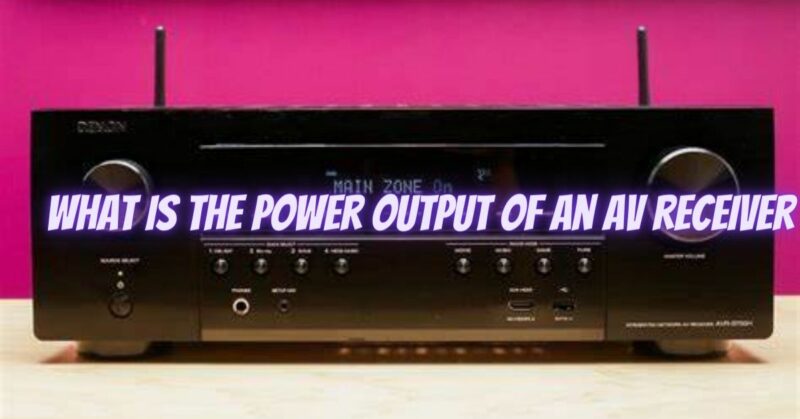When considering an AV receiver for your home theater setup, understanding the power output specifications is essential. The power output of an AV receiver refers to the amount of electrical energy it can deliver to your speakers, influencing the audio performance and overall sound quality. In this article, we will delve into the concept of power output in AV receivers, discuss wattage ratings, and explore the factors that affect the actual audio performance.
Understanding Power Output and Wattage Ratings:
- Wattage Ratings: The power output of an AV receiver is commonly measured in watts per channel (WPC). The wattage rating indicates the amount of power an amplifier can deliver to a speaker. AV receivers often provide different wattage ratings for different channels or speaker configurations, such as stereo (2.0), surround sound (5.1 or 7.1), or immersive formats like Dolby Atmos (9.2 or 11.2). Higher wattage ratings generally indicate greater power capabilities.
- Continuous Power vs. Peak Power: Two key specifications associated with power output are continuous power and peak power. Continuous power refers to the sustained power the AV receiver can deliver consistently over time without distortion. Peak power, on the other hand, refers to the maximum power output that the receiver can produce for short bursts, such as during dynamic audio passages or intense movie scenes. Continuous power is a more relevant specification for everyday listening scenarios.
- Impedance and Sensitivity: The power output of an AV receiver is influenced by the impedance and sensitivity ratings of your speakers. Impedance measures the resistance of the speaker to the electrical current, typically rated in ohms (Ω). AV receivers are usually rated to work with specific speaker impedance ranges, such as 4Ω to 8Ω. Sensitivity refers to the speaker’s efficiency in converting electrical power into sound output and is measured in decibels (dB). Speakers with higher sensitivity ratings require less power to achieve the same volume levels.
- Real-World Performance: While wattage ratings provide a general indication of an AV receiver’s power output, real-world performance can vary depending on several factors. The actual audio performance depends on the quality of the amplifier circuitry, power supply, and the design of the AV receiver. Higher-end AV receivers tend to deliver cleaner and more dynamic sound, even with lower wattage ratings, due to superior components and engineering.
- Speaker Matching and Room Size: Matching the power output of your AV receiver to your speakers and the size of your room is crucial for optimal performance. Speakers with higher power handling capabilities can better utilize the power output of a more powerful receiver. In larger rooms, more power may be required to achieve sufficient volume levels and dynamic range. However, it is important to note that excessively high power output is not always necessary or beneficial for average home theater setups.
Conclusion: The power output of an AV receiver, measured in watts per channel, provides an indication of its capability to deliver electrical energy to your speakers. While higher wattage ratings can suggest greater power potential, factors such as speaker impedance, sensitivity, and real-world performance also influence the actual audio quality. It is important to consider speaker matching and room size when determining the appropriate power output for your home theater setup. Remember, a well-designed AV receiver with quality components can deliver impressive audio performance, even with modest wattage ratings.


